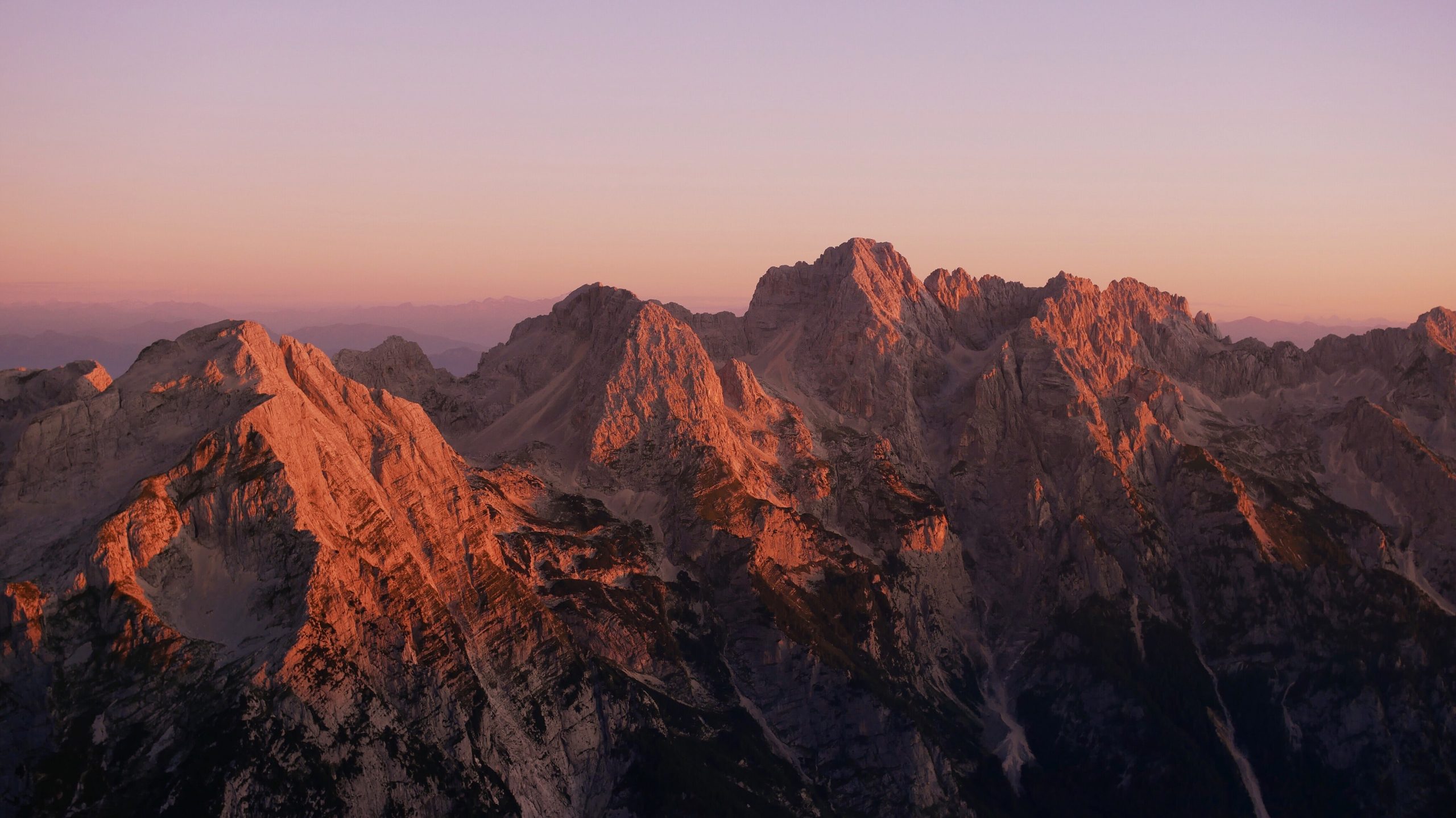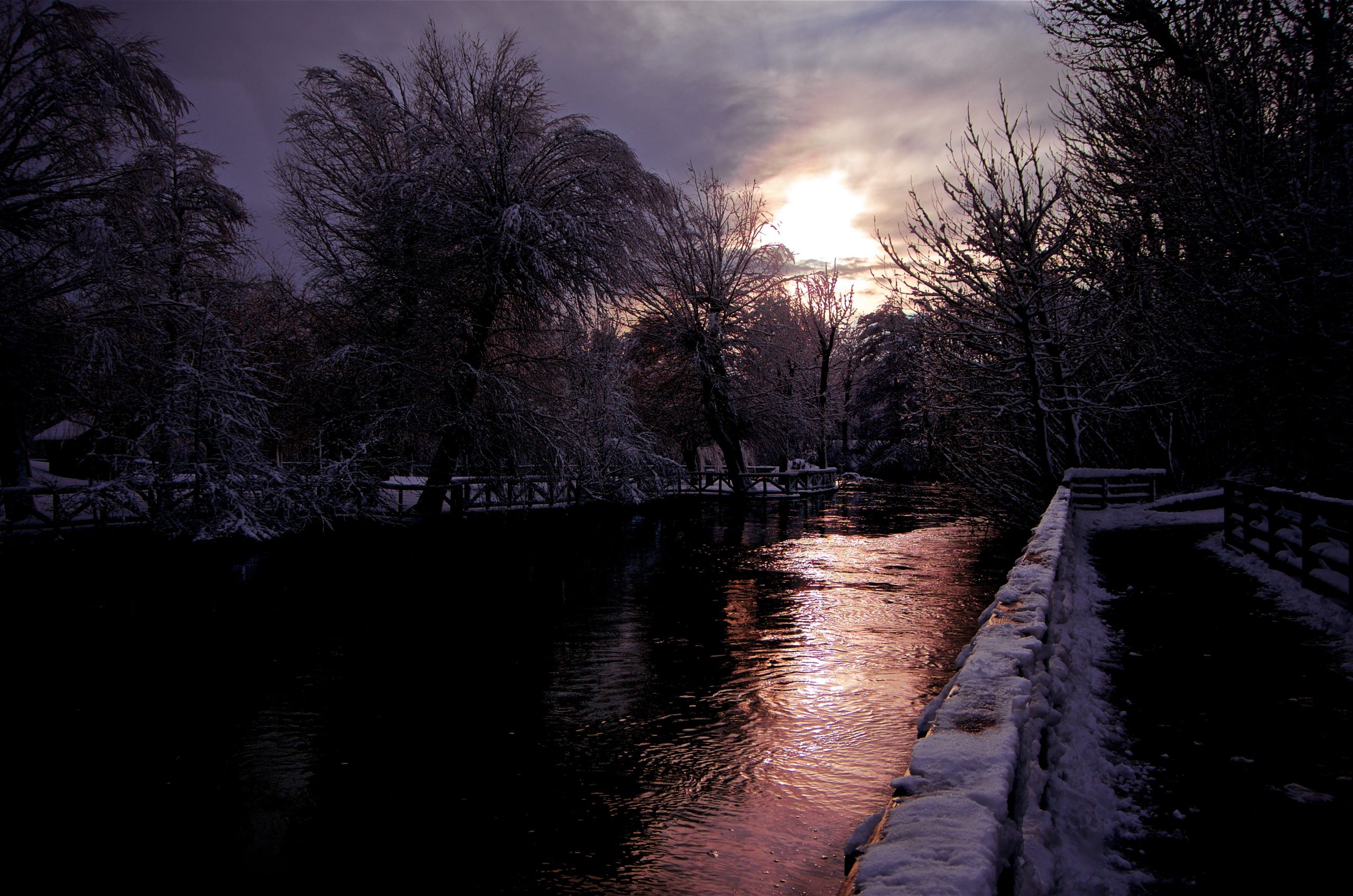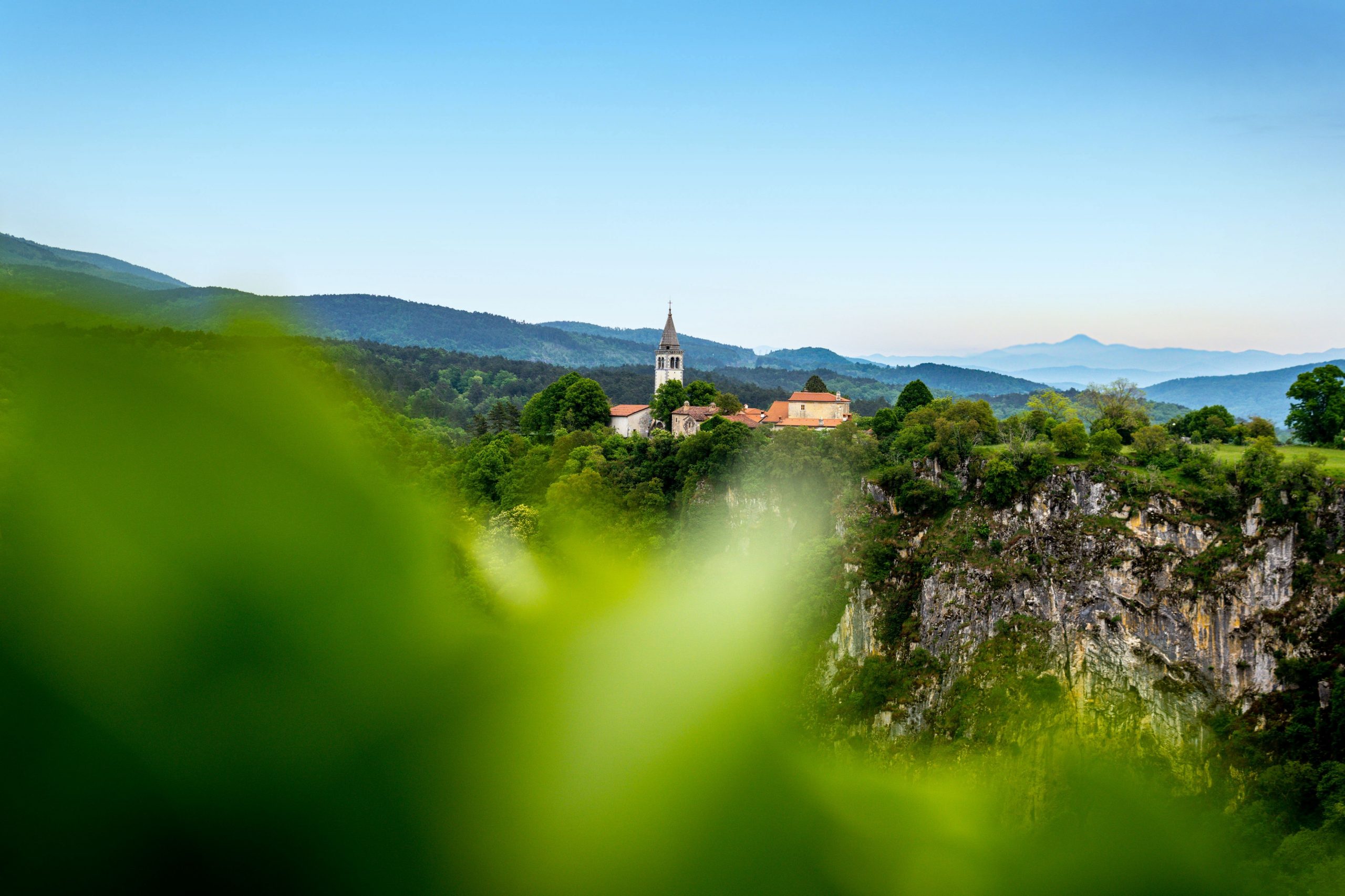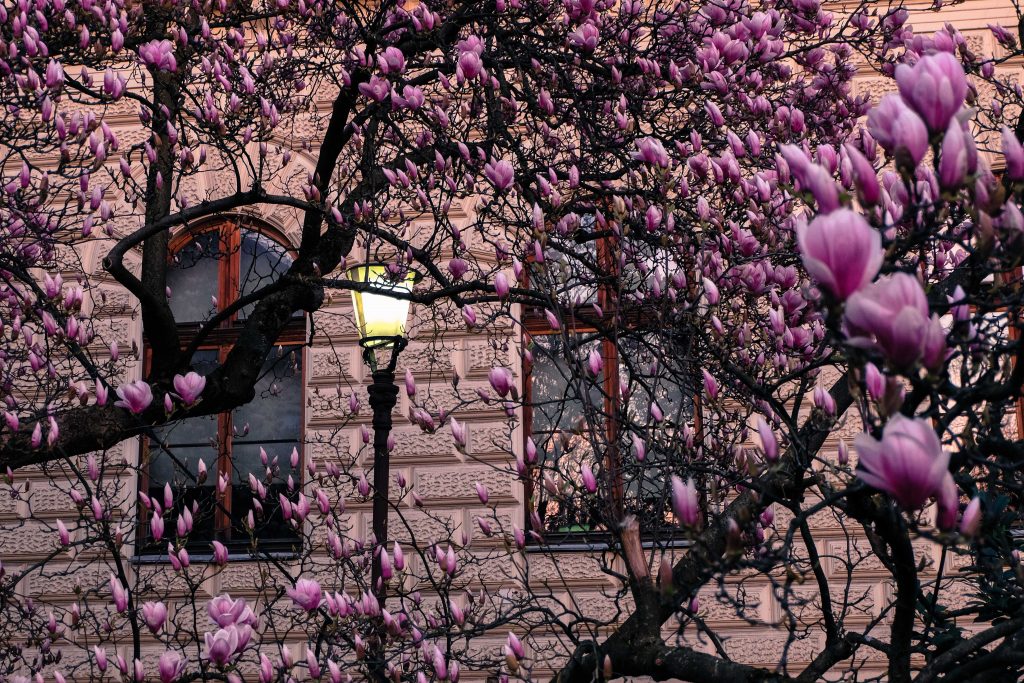Slovenia is a small country, but has skyscraping majestic mountains as far as the eye can see, which are some of the most beautiful in all of Alpine Europe. In fact, upon arrival in Slovenia, you might think you’ve landed in a magical mountain kingdom. Slovenia is also home to three Alpine ranges: the Julian Alps, which boasts the country’s highest peak, Mount Triglav; the Karavanke Alps, one of the longest mountain ranges in Europe; and the Kamnik-Savinja Alps, where you will find the Skuta Glacier, which is the most southeastern glacier in the Alps, as well as one of its lowest-elevation glaciers.
Some of the most beautiful and best Slovenian mountains can be found in any of the country’s Alpine ranges. In addition to the aforementioned Mount Triglav, lofty Slovenian mountains include Mount Stol, the highest peak in the Karavanke Alps; the Julian Alps’ Mount Mangant, the third-highest peak in the country, which lies on the border between Italy and Slovenia; and Mount Grintovec, the highest peak in the Kamnik-Savinja Alps. In our Slovenian mountains guide, we cover them all.
Due to the intricate network of Slovenian mountains trails, the country is also a trekker’s Mecca and a world-class hiking destination. In fact, there are more than 10,000 kilometers (over 6,200 miles) of marked hiking trails in Slovenia. Furthermore, three of the world’s most renowned international hiking trails meet in Slovenia: the legendary Alpe Adria Trail, which stretches 750 kilometers (466 miles) through Austria, Italy and Slovenia; Via Alpina, which, according to Via Alpina — Discover the Alps, consists of five international trails through eight countries; and the Way of St. James, the Slovenian version of the sacred El Campo.
Julian Alps
The towering Julian Alps stretch from northeastern Italy to northwestern Slovenia. This scenic range houses Triglav National Park and the marked 300-kilometre (186-mile) Julian Alps Hiking Trail, which winds through the range and many villages that lie within, as well as along rivers, lakes, waterfalls, gorges and through Arden-like forests. The Julian Alps also boasts the three highest peaks in Slovenia.
Mount Triglav
The King of the Slovenian mountains, at 2,863 meters (9,395 feet), Triglav is the highest peak in the Julian Alps, as well as the entire country. It is also the showpiece of Triglav National Park, which is the only national park in the country. Mount Triglav is the symbol of Slovenia and a point of national pride. In fact, an image of the mountain graces Slovenia’s coat of arms and one of the country’s former presidents once proclaimed it the duty of every Slovenian to scale Triglav’s full height at least once in their lifetime. Today, Triglav is a bucket-list climb for mountaineers across the globe.
Mount Škrlatica
Slovenia’s second-highest peak, which reaches heights of 2,740 meters (8,990 feet), is known as the “Queen of the Julian Alps,” as Triglav is the “King.” King Triglav and Queen Škrlatica both tower and reign over noble Vrata Valley, which is widely regarded as one of Slovenia’s most impressive Alpine valleys. Škrlatica is far less crowded than compared to Triglav and more difficult to ascend, but well worth it as the views from the top are superb.

Mount Mangart
Although not quite as tall as Triglav and Škrlatica, the Prince of the Julian Alps, Mangart, is not far behind the King and Queen at 2,679 meters (8,789 feet). It is also the Slovenia Julian Alps’ third-highest peak and can be reached on the country’s highest road, aptly named Mangart Pass. Located in Triglav National Park, Mangart separates Italy and Slovenia and is a very popular destination for climbers of both sides of the border, as well as from all over Europe.
Mount Razor
Despite its ominous-sounding name, pyramidal-shaped Mount Razor is one of the most respected mountains in Slovenia by climbers, which is why it is dotted with mountain huts. Regal Razor has been called “The Royal of the Julian Alps” by renowned Julian Alps explorer Julius Kugy, and many of its climbers consider it the most beautiful peak in the range. The summit of this Alpine giant can be reached by a winding, hair-raising trail through some of the most striking scenery in the region.
Mount Prisojnik
The summit of grand Mount Prisojnik in the Julian Alps lies at 2,547 meters (8.356 feet).It is one of the premier peaks in the Julian range for climbing and hiking. In winter, one of the most popular pastimes on the peak is climbing frozen waterfalls. Furthermore, the front window on the upper edge of Mount Prisojnik’s northern wall is perhaps the most famous and photographed in the Julian Alps.
Mount Krn
Imposing Mount Krn (2,244 meters, or 7,362 feet) is best known for its magnificent western wall, which is visible from Kobarid. At its summit, you can see as far as the Adriatic, located about 30 miles away, as well as Lake Krn to the north, the largest glacial lake in Slovenia. This area is also the location of the WWI battles of the Isonzo, and today vestiges of the conflicts can be found around Krn.
Karavanke Alps
When it comes to Alpine peaks, the Julian Alps aren’t the only game in town. The Karavanke Alps, one of the longest ranges in Europe and the longest in Slovenia, are just as scenic, and its hiking trails less taxing. The highest peak in the Karavanke Alps is Mount Stol, at over 2,230 meters (7,300 feet), of which numerous trails lead to its peak. These picturesque mountains are ideal for brief escapes into the peaks as well as long-distance treks. In addition to a plethora of trails leading to majestic mountaintops, you’ll also find magnificent mountain pastures, jaw-dropping valleys, gorgeous gorges and wonderful waterfalls in the Karavanke Alps. If your path leads to Mount Golica, you will also find yourself swimming in a sea of daffodils.

Mount Stol
At 2,236 meters (7,336 feet), the Karavanke Alps’ Mount Stol, which straddles the border between Austria and Slovenia, towers over its neighbours. Mount Stol also has bird’s-eye views of picture-postcard Lake Bled. In fact, many postcards of Lake Bled feature Mount Stol in the background. From the summit of Mount Stol, you will also see a sea of other panoramic peaks in the Karavanke range.
Mount Golica
One of Mount Stol’s Karavanke cousins is Mount Golica, which is best known for its seemingly endless fields of white narcissi. In fact, Mount Golica is frequently referred to as the “Mountain of Daffodils.” Its slopes are mostly used for mountaineering and as pastures for sheep.
Mount Trupejevo Poldne
This 1,931-meter (6,335-feet) peak lies on the border between Slovenia and Austria. Trupejevo Poldne is a favoured destination for hikers, tour skiers and mountain bikers, due to the cornucopia of trails of all skill levels. Whether you hike, ski or bike to its summit, you will have rewarding views of southern Austria and the nearby Julian Alps.
Kamnik-Savinja Alps
The Kamnik-Savinja Alps are located south of the Karavanke range and are the proud home of the Skuta Glacier. This range is also well-known for its biodiversity, crystal-clear rivers and streams, peaceful mountain pastures, serene forests, glacier-carved valleys and an extensive network of marked hiking trails that are well-maintained. Visitors to the Kamnik-Savinja Alps will marvel at its stunning Logar Valley and its numerous waterfalls, including Rinka Falls, one of the tallest free-falling waterfalls in Slovenia, and the Solcava Panoramic Road, widely considered the trail with the most amazing views in this exalted range of mountains.
Mount Ojstrica
This peak is defined by its iconic pyramid shape, which can be seen from miles away. Ojstrica, which means Sharp Peak, has three distinct ridges, and because it consists of white limestone it seems to radiate in the sun, even more so when snow-capped. From its height, Ojstrica has commanding views of world-famous Lake Bled and its revered island, where stands the sacred Church of Mary the Queen, also known as Our Lady of the Lake.

Mount Grintovec
The highest mountain in the Kamnik-Savinja Alps (2,558 meters, or 8,392 feet) is a popular playground for hikers, climbers and skiers. Mount Grintovec, aka the “King of the Kamnik-Savinja Alps,” has a prominence, the height of the mountain’s summit relative to the lowest contour line encircling it, of 1,706 meters (5,597 feet), making it not only the second-most prominent peak in Slovenia but an “ultra,” and one of only 1,524 prominent peaks on Earth. In the summer, Mount Grintovec blooms with wildflowers. It is also part of the World Mountain Running Association Grand Prix, a yearly series of mountain running competitions.
Mount Skuta
The Kamnik-Savinja Alps’ third-highest peak (2,532 meters, or 8,307 feet) is also home to the Skuta Glacier, the most southeastern glacier in the Alps and one of its lowest-elevation glaciers. At the top of the mountain, intrepid mountaineers will find the architecturally innovative, extremely perched Mount Skuta Alpine Shelter, which can house up to eight people. According to Uncrate, the shelter was designed to “stand up to the rigours of high-altitude life.” It takes a lot of effort to reach the Skuta Alpine Shelter, and is not for the novice, but well worth the effort for the physically fit.
The Karst
In addition to the aforementioned Alps, Slovenia also consists of the ruggedly picturesque Karst region, which is characterized by high, steep plateaus, cliffs, deep valleys, pine forests and caves. In fact, the Karst is famous for caves, including world-renowned Postojna Cave, the largest show cave in Europe, and Škocjan Caves, which is a UNESCO World Heritage Site. The Karst is not only an elevated, outdoor playground but a subterranean wonderland where you can combine hiking and mountaineering with spelunking.
Postojna Cave
The unbelievable underground world of Postojna Cave is 24 kilometres (15 miles) long and 2 million years old, and the most awe-inspiring cave on the continent. Visitors to Postojna Cave can explore up to 5 kilometres (3.1 miles) of its out-of-this-world system of caverns, halls and passages, not only on foot but by electric train — 1.5 kilometres by walking and 3.5 kilometres on the train, which was the first railway to ever be opened in an underground cave. By foot and train, you will see spectacular stalagmites and stalactites in all shapes and sizes. Additionally, while underground in the cave, you can see the olms, aka the “mysterious baby dragons,” who live and thrive in the eternal darkness of the cave. Not a real dragon, the olm is actually an aquatic salamander that eats, sleeps and breeds entirely underwater. At Slovenia’s most visited tourist attraction, Postojna Cave Park, you will also find medieval Predjama Castle, one of the 10 most fascinating castles in the world. This amazing castle, part of which lies in the mouth of a cave, is a 13th-century masterpiece that features restored living areas, dungeons and a natural secret tunnel that leads to the top of a cliff.

Škocjan Caves
Otherworldly Škocjan Caves has mind-blowing cave formations, underground lakes and waterfalls. The cave system is so wondrous that it has been recognized as one of the natural treasures of planet Earth. Additionally, Škocjan Caves, created by the Reka River, has been included on the List of Ramsar Wetlands of International Importance due to its significance in terms of ecology, botany, zoology and more. At Škocjan Caves Park you will also find a souvenir shop and restaurant, not to mention the biggest underground canyon in the world.










Leave a Reply